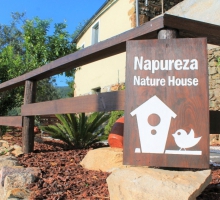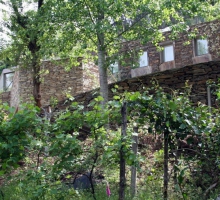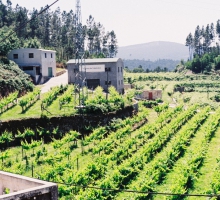Next to the Alvarenga’s bridge, in the right bank of the Paiva river, there is a geological outcrop characterized by solid benches, of black quartzite with dissemination of sulfides (Espiunca formation), where the fault occurs – Espiunca’s fault has a high educational value and it is a real portrait for geology publications. The quartzite strata were originated by the deposit of sands, in coastal environment, at about 500 million years ago and they present a geological deformation – responsible for the movement of blocks caused by distension movements, probably occurred in the final period of the Variscan Orogeny and reactivated by the Alpine Orogeny.
In this geosite, it is possible to observe the different elements that characterize the faults, namely the fault plane (surface where the displacement happens), the ceiling (block placed above the fault plane), the wall (block placed below the fault plane) and the tailing (measure of the blocks displacement). Known as the fault of Espiunca, it is considered a normal fault, where the superior block goes up without overlapping the inferior block, causing the increasing of the horizontal area of the affected zone or, in other words, due to the distension forces, the ceiling lowers in relation to the wall. The displacement of the blocks – tailing, has about 1.70 m and a NNE-SSW direction. Near this geosite, there is an interpretative panel of this geological phenomenon.
Location: Arouca
In this geosite, it is possible to observe the different elements that characterize the faults, namely the fault plane (surface where the displacement happens), the ceiling (block placed above the fault plane), the wall (block placed below the fault plane) and the tailing (measure of the blocks displacement). Known as the fault of Espiunca, it is considered a normal fault, where the superior block goes up without overlapping the inferior block, causing the increasing of the horizontal area of the affected zone or, in other words, due to the distension forces, the ceiling lowers in relation to the wall. The displacement of the blocks – tailing, has about 1.70 m and a NNE-SSW direction. Near this geosite, there is an interpretative panel of this geological phenomenon.
Location: Arouca





